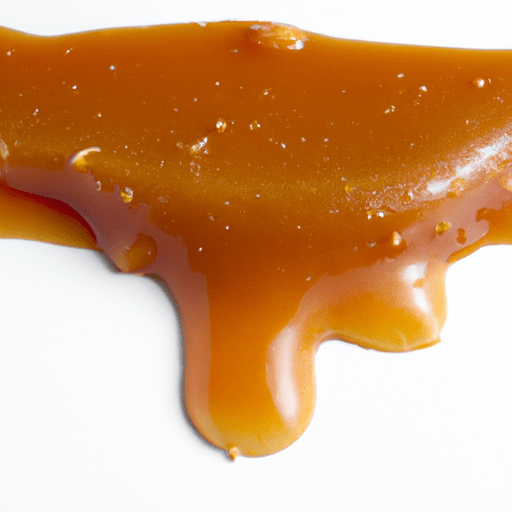Exploring the Sweet World of Caramel
There’s something undeniably magical about the rich, golden hue and irresistibly sweet aroma of caramel. From drizzling it over desserts to using it as a key ingredient in various confections, caramel has secured its place in the hearts and taste buds of many. But what exactly is caramel, and why does it hold such fascination for food lovers around the world? Let’s dive into the sweet world of caramel and uncover its secrets.
The Essence of Caramel
Caramel is a delectable confection created by heating sugar until it reaches a deep amber color. The process of caramelization occurs when high heat causes sugar molecules to break down and recombine, resulting in a complex flavor profile that combines sweetness and a hint of bitterness. This distinctive taste, often described as toasty or butterscotch-like, is what makes caramel stand out among its sugary counterparts.
Versatility in Culinary Delights
Caramel’s irresistible flavor has made it a staple in many culinary creations. Its smooth, velvety texture and captivating taste elevate a multitude of desserts, beverages, and even savory dishes. Here are some common uses of caramel in cooking:
Sauces and Toppings: Caramel sauces are a beloved addition to ice cream, crepes, pancakes, and other sweet treats. The sauce’s rich, gooey consistency and deep sweetness can transform a simple dish into a decadent indulgence.
Caramelization: For savory dishes such as roasted vegetables or meats, caramelization adds a beautiful depth of flavor. It enhances natural sweetness, adds complexity, and lends an appealing golden color to the final dish.
Candy Making: Caramel is the star ingredient in a wide range of candies. From soft and chewy caramel candies to crunchy caramelized nuts, its versatility shines through.
Baking: Caramel can be used to flavor cakes, cookies, and pies, adding a unique twist to traditional recipes. Just think of caramel-filled muffins, caramel apple pie, or salted caramel brownies!
Nutritional Value of Caramel
While caramel certainly satisfies our sweet tooth, it’s important to consider its nutritional composition. Caramel is primarily made of sugar, which means it contributes to your calorie intake without offering much in terms of nutrients. However, in small amounts, caramel can be enjoyed as part of a balanced diet.
Additionally, when choosing caramel products, it’s worth being mindful of additives like artificial flavors and preservatives. Opting for homemade or artisanal caramels made with natural ingredients can provide a more wholesome experience.
A Brief Dip into Caramel’s History
The origins of caramel can be traced back thousands of years to ancient civilizations such as the Egyptians and Persians. These early confectioners discovered the art of caramelization by heating sugar and using it as a sweetener and coloring agent.
Over time, caramel became increasingly popular worldwide. In the 17th century, French chefs embraced caramel as a fundamental ingredient in their culinary repertoire. From there, its popularity spread across Europe and eventually made its way to other continents.
Fun Facts about Caramel
Caramel is one of the key flavors found in traditional candies like toffee, butterscotch, and caramel corn.
The name “caramel” originates from the Latin word “cannamellis,” which means “sugar cane honey.”
National Caramel Day is celebrated on April 5th, allowing caramel enthusiasts to revel in their love for this delightful treat.
Whether you enjoy it drizzled over a steaming latte, baked into a sumptuous dessert, or nibbled as a stand-alone indulgence, caramel has won the hearts of food enthusiasts worldwide. Its delectable taste, versatility in cooking, and rich cultural history make it a beloved ingredient. So go ahead, embrace the sweetness, and savor the delightful world of caramel!
Origin:
- Caramel is believed to have originated in Persia around the 9th century. The word “caramel” is derived from the Arabic word “qand,” meaning “cane sugar.”
- It was introduced to Europe by the Arab Moors and gained popularity during the Middle Ages.
Common Uses:
- Caramel is widely used as a flavoring and sweetener, commonly found in desserts, candies, sauces, and beverages.
- It is a key ingredient in caramel sauce, caramel candies, caramel apples, flan, and crème caramel.
- It is also used in flavoring coffee, ice cream, and various baked goods like cookies and cakes.
Nutritional Benefits:
- Caramel is primarily made of sugar, so it is high in calories and carbohydrates.
- It contains small amounts of vitamins and minerals like potassium, calcium, and iron, but these quantities are generally too low to have a significant impact on overall nutrition.
Unique Properties:
- Caramelization is a chemical reaction that occurs when sugar is heated and undergoes the Maillard reaction, resulting in a distinct golden-brown color and rich flavor.
- Different levels of caramelization yield varying flavors and consistencies, ranging from a light golden syrup to a deep amber color with a more intense bittersweet taste.
- Caramel has a characteristic smooth and sticky texture due to its molten state when cooked.
Historical Significance:
- In the 18th century, caramel became popular as a flavoring ingredient for desserts and confections.
- Caramel candies, like caramels and toffees, gained popularity during the 19th century.
- Today, caramel remains a beloved flavor and sweet treat known for its rich taste and versatility in the culinary world.




Use the share button below if you liked it.
It makes me smile, when I see it.